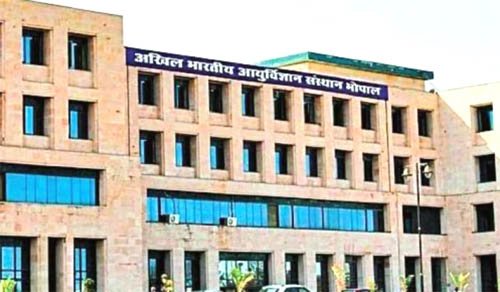Chennai, Jan 19 (UNI) The Indian Space Agency on Friday announced that the Laser Retroreflector Array (LRA) on the Chandrayaan-3 lander has begun serving as a fiducial point points (precisely located markers for reference) on the moon.
NASA’s Lunar Reconnaissance Orbiter (LRO) achieved a laser range measurement using the LRA by successfully detecting signals reflected by it on December 12, 2023, ISRO said.
The ranging utilized the Lunar Orbiter Laser Altimeter (LOLA) on the LRO. The observation occurred during lunar night time, with the LRO ascending to the east of Chandrayaan-3.
NASA’s LRA was accommodated on the Vikram lander under international collaboration. It comprises eight corner-cube retroreflectors on a hemispherical support structure. This array facilitates laser ranging from various directions by any orbiting spacecraft with suitable instrument. The passive optical instrument, weighing about 20 grams, is designed to last for decades on the lunar surface.
Landed near the lunar south pole on August 23, 2023, Chandrayaan-3’s Vikram lander has been accessible for LOLA measurements since then.
While several LRAs have been deployed on the Moon since the beginning of lunar exploration, the LRA on Chandrayaan-3 is a miniature version and is the only one available near south pole currently.
NASA’s LRA on Chandrayaan-3’s Vikram lander will continue to serve as a long-term geodetic station and a location marker on the lunar surface, benefitting current and future lunar missions. These measurements, apart from helping in precise determination of spacecraft’s orbital position, will help refine the lunar geodetic frame, revealing insights into the Moon’s dynamics, internal structure, and gravitational anomalies, ISRO said.
Meanwhile, NASA said the Laser Instrument on NASA’s LRO Successfully ‘Pings’ Indian Moon Lander.
“For the first time at the Moon, a laser beam was transmitted and reflected between an orbiting NASA spacecraft and an Oreo-sized device on ISRO’s (Indian Space Research Organisation) Vikram lander on the lunar surface. The successful experiment opens the door to a new style of precisely locating targets on the Moon’s surface”, it said.
“At 3 p.m. EST on Dec. 12, 2023, NASA’s LRO (Lunar Reconnaissance Orbiter) pointed its laser altimeter instrument toward Vikram. The lander was 62 miles, or 100 kilometers, away from LRO, near Manzinus crater in the Moon’s South Pole region, when LRO transmitted laser pulses toward it”, it said, adding, after the orbiter registered light that had bounced back from a tiny NASA retroreflector aboard Vikram, NASA scientists knew their technique had finally worked.
Sending laser pulses toward an object and measuring how long it takes the light to bounce back is a commonly used way to track the locations of Earth-orbiting satellites from the ground. But using the technique in reverse – to send laser pulses from a moving spacecraft to a stationary one to determine its precise location – has many applications at the Moon, scientists say.
“We’ve showed that we can locate our retroreflector on the surface from the Moon’s orbit,” said Xiaoli Sun, who led the team at NASA’s Goddard Space Flight Center in Greenbelt, Maryland, that developed the retroreflector on Vikram as part of a partnership between NASA and ISRO. “The next step is to improve the technique so that it can become routine for missions that want to use these retroreflectors in the future.”
Only 2 inches, or 5 centimeters, wide, NASA’s tiny but mighty retroreflector, called a Laser Retroreflector Array, has eight quartz-corner-cube prisms set into a dome-shaped aluminum frame. The device is simple and durable, scientists say, requiring neither power nor maintenance, and can last for decades. Its configuration allows the retroreflector to reflect light coming in from any direction back to its source.
Retroreflectors can be used for many applications in science and exploration and, indeed, have been in use at the Moon since the Apollo era. By reflecting light back to Earth, the suitcase-size retroreflectors revealed that the Moon is moving away from our planet at a rate of 1.5 inches (3.8 centimeters) per year.
This new generation of tiny retroreflectors has even more applications than their larger predecessors. On the International Space Station, they’re used as precision markers that help cargo-delivery spacecraft dock autonomously.
In the future, they could guide Artemis astronauts to the surface in the dark, for example, or mark the locations of spacecraft already on the surface, helping astronauts or uncrewed spacecraft land next to them.
But there’s more work to do before retroreflectors can light up the Moon. The biggest hurdle to their immediate adoption is that LRO’s altimeter, which has operated for 13 years beyond its primary mission, is the only laser instrument orbiting the Moon for now. But the instrument wasn’t designed to pinpoint a target; since 2009, the altimeter – called LOLA – has been responsible for mapping the Moon’s topography to prepare for missions to the surface.
“We would like LOLA to point to this Oreo-sized target and hit it every time, which is hard,” said Daniel Cremons, a NASA Goddard scientist who works with Sun. It took the altimeter eight tries to contact Vikram’s retroreflector.











